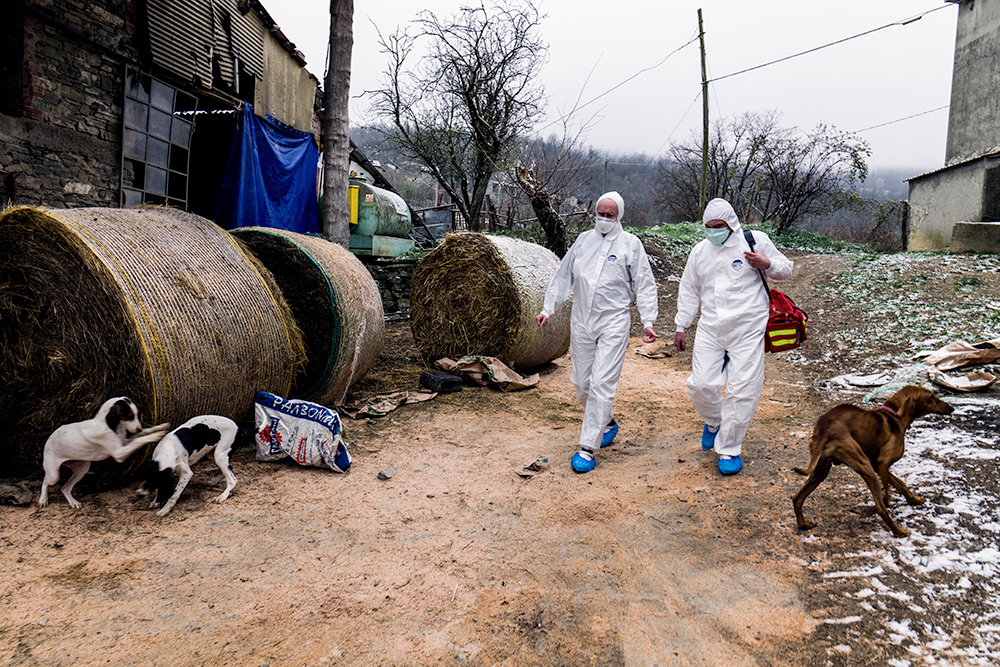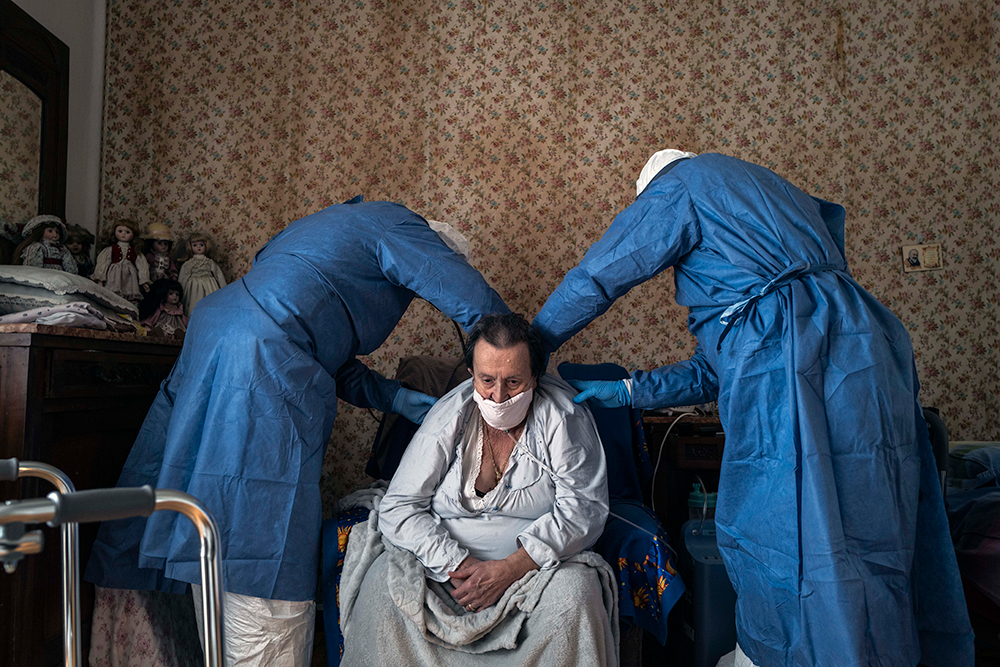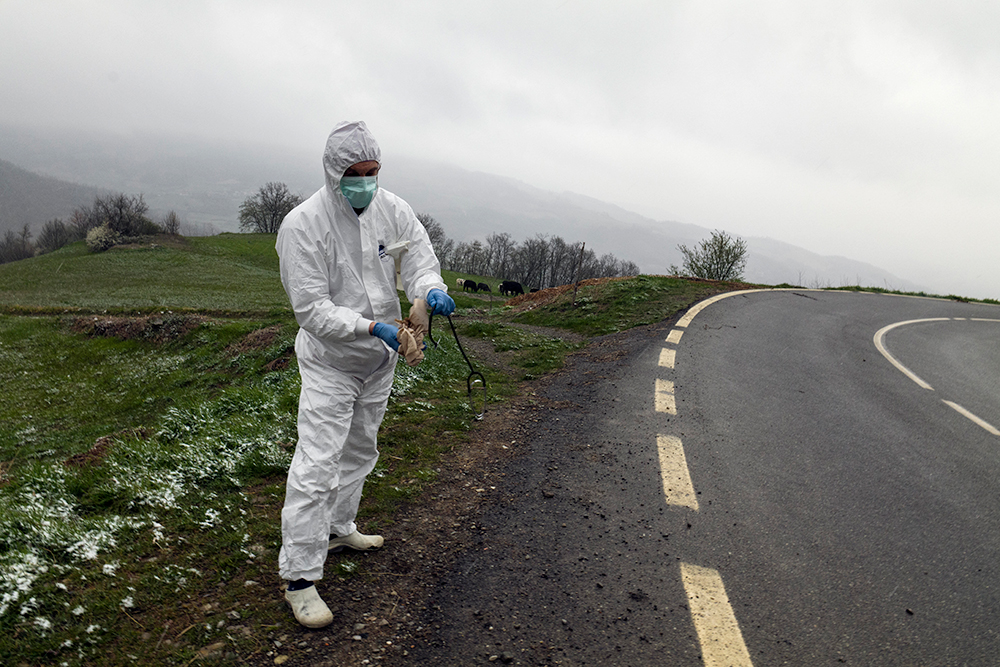Doctors diagnosed the first case of Covid-19 in Italy on Feb 21 of this year, and the country quickly became the ‘epicenter’ of the pandemic, with almost 1000 people dying everyday in March. By October, there had been more than 35.000 deaths.
In March the Italian government imposed a national lockdown, limiting movements, prohibiting social life and keeping to the minimum the contacts in the hospitals, making the health caregivers the only human contact patients had.
Thousands of Italians were completely alone, in their house and in their deathbed.
While all these restrictions were implemented, Luigi Cavanna, the head of the Oncology ward in Piacenza Hospital, took on himself the decision of trying a different approach and treating the disease in its early stage, in the same way you would treat cancer.
Equipped with a device that monitors the level of oxygen in the blood and a portable ultrasound chest scanner, Dr Cavanna started visiting patients at their home - treating them mostly with hydroxychloroquine – and giving them the human contact and reassurance that they were missing.
He took care of more than 365 patients and only a small percentage had to be hospitalized.
professional category
Stamina (Series)
DESCRIPTION
AUTHOR
Gabriele Micalizzi is an Italian reporter specialized in war photojournalism, he has also been involved in long-term social, anthropological and ethnographic projects, without ever giving up his personal gaze.
He collaborates with national and international newspapers including: The New York Times, New Yorker, Wall Street Journal, TIME Magazine, The Guardian, Vice UK, Le Monde, Rolling Stone Italia, Internazionale, Die Zeit, Corriere Della Sera, La Repubblica, La Stampa, Esquire and Ruptly.
He is one of the founders of the Cesura collective. In 2011 he began to report all the events related to the “Arab Spring”. In 2016 he won "Master of Photography" and began his collaboration with Leica. In the same year he presented his work on the Libyan situation: DOGMA.
In 2019, during the Kurdish offensive in the Baghuz area against the last bastion of Isis, he was wounded by an RPG rocket.
During the Covid-19 pandemic in Italy, he documented the area with the highest number of cases, traveling between Bergamo and the rest of Lombardy.
In 2022 he documented the war in Ukraine for WSJ, Die Zeit and Le Monde. For these works, he was awarded the Premiolino journalism prize at the Milan Triennale in September.
He collaborates with national and international newspapers including: The New York Times, New Yorker, Wall Street Journal, TIME Magazine, The Guardian, Vice UK, Le Monde, Rolling Stone Italia, Internazionale, Die Zeit, Corriere Della Sera, La Repubblica, La Stampa, Esquire and Ruptly.
He is one of the founders of the Cesura collective. In 2011 he began to report all the events related to the “Arab Spring”. In 2016 he won "Master of Photography" and began his collaboration with Leica. In the same year he presented his work on the Libyan situation: DOGMA.
In 2019, during the Kurdish offensive in the Baghuz area against the last bastion of Isis, he was wounded by an RPG rocket.
During the Covid-19 pandemic in Italy, he documented the area with the highest number of cases, traveling between Bergamo and the rest of Lombardy.
In 2022 he documented the war in Ukraine for WSJ, Die Zeit and Le Monde. For these works, he was awarded the Premiolino journalism prize at the Milan Triennale in September.
back to gallery







